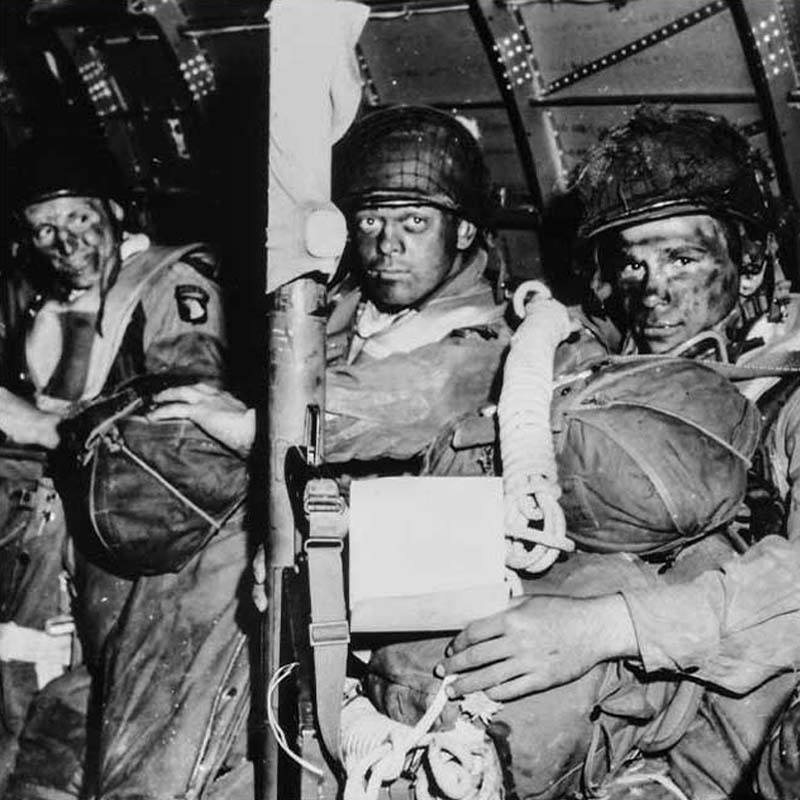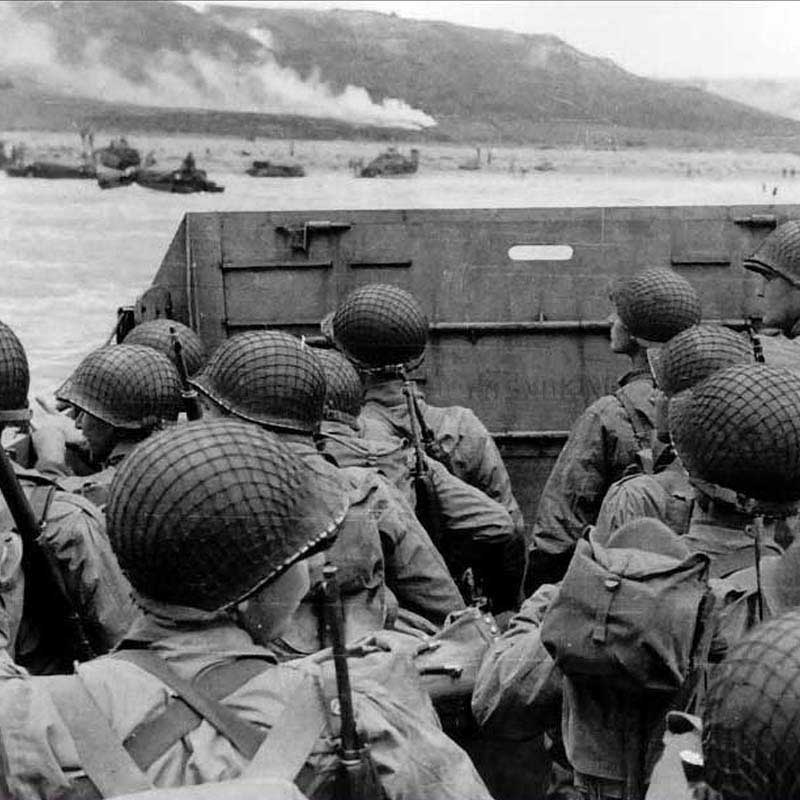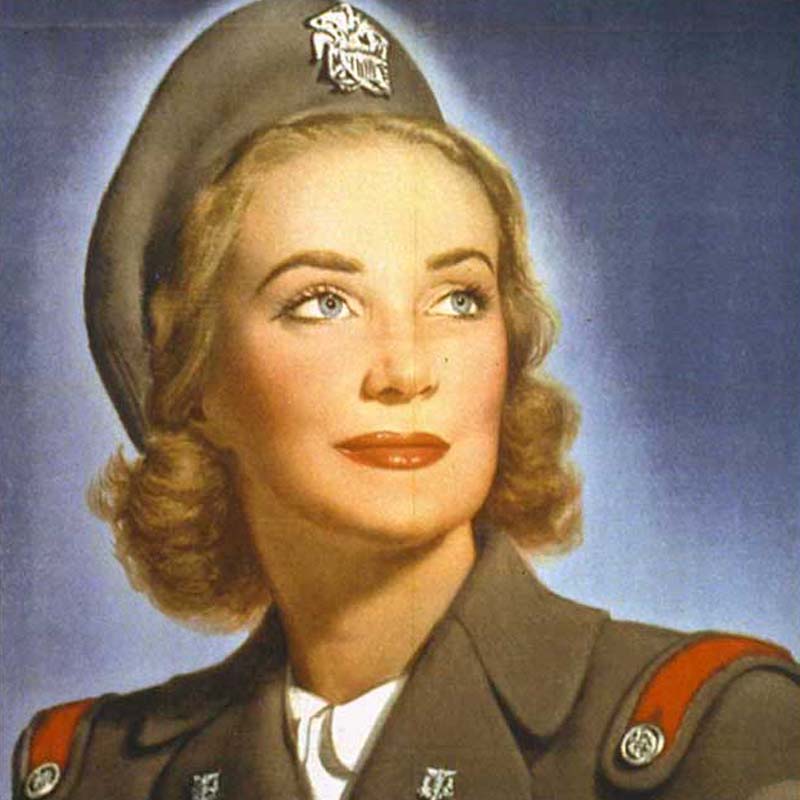D-DAY
"The eyes of the world are upon you … The hopes and prayers of liberty loving people everywhere march with you. Your task will not be an easy one … Your enemy is well trained, well equipped and battle hardened, he will fight savagely … I have full confidence in your courage, devotion to duty and skill in battle. We will accept nothing less than full victory!" Gen. Dwight D. Eisenhower, Supreme Commander Allied Expeditionary Force, Message to the troops on June 6, 1944
Immediately after France fell to the Nazis in 1940, the Allies planned a cross-Channel assault on German occupying forces. The opening invasion of the liberation of France would ultimately code-named Operation Overlord. By May 1944, 2,876,000 Allied troops were amassed in southern England. The largest armada in history, lay in wait, and more that 1,200 planes stood ready. Against a tense backdrop of uncertain weather forecasts, disagreements in strategy, and related timing dilemmas, General Dwight D. Eisenhower decided before dawn on June 5 to proceed with Overlord. Later that same afternoon, he scribbled a note intended for release, accepting responsibility for the decision to launch the invasion and full blame should the effort to create a beachhead on the Normandy coast fail.
On June 6, 1944, nearly 160,000 Allied troops landed along a 50-mile stretch of heavily-fortified French coastline, to fight Nazi Germany on the beaches of Normandy, France. More than 5,000 Ships and 13,000 aircraft supported the D-Day invasion, and by day's end, the Allies gained a foot-hold in Continental Europe. The cost in lives on D-Day was high. More than 9,000 Allied Soldiers were killed or wounded, but their sacrifice allowed more than 100,000 Soldiers to begin the slow, hard slog across Europe, to defeat Adolf Hitler's crack troops.
160,000
TROOPS
5,000
SHIPS
13,000
AIRCRAFT
Night Drop
Before the invasion, air and sea components played major roles — 12,000 planes of the Allied air forces swept the Luftwaffe from the skies while Allied ships protected the English Channel. Meanwhile, airborne troops from the United States, Britain and Canada trained and rehearsed for their role in advance of the amphibious landings. In the invasion's early hours, over one thousand transports dropped 23,400 allied airborne troops over Normandy. Their mission was to secure the flanks and beach exits of the assault area.

Securing the Beachheads
The assault phase of Operation Overlord was known as Operation Neptune. This operation, which began on June 6, 1944, and ended on June 30, 1944, involved landing troops on beaches and all other associated supporting operations required to establish a beachhead in France. Allied code names for the beaches along the 50-mile stretch of Normandy coast targeted for landing were Utah, Omaha, Gold, Juno and Sword.

THE MEANING OF “D” IN D-DAY
Many explanations have been given for the meaning of D-Day, June 6, 1944, the day the Allies invaded Normandy from England during World War II. The Army has said that it is “simply an alliteration, as in H-Hour.” Others say the first D in the word also stands for “day,” the term a code designation. The French maintain the D means “disembarkation,” still others say “debarkation,” and the more poetic insist D-Day is short for “day of decision.” When someone wrote to General Eisenhower in 1964 asking for an explanation, his executive assistant Brigadier General Robert Schultz answered: “General Eisenhower asked me to respond to your letter. Be advised that any amphibious operation has a 'departed date'; therefore the shortened term 'D-Day' is used.”
Photo courtesy of the Imperial War Museum, A 23992.
We Remember
Explore the wealth of information related to D-Day. Get a bigger picture by watching videos, viewing photos and reading stories from the era.

D-Day: Voices of the 101st
Hear from Soldiers in today's 101st Airborne Division on what the heroic efforts of Soldiers from WWII mean to them and how they honor their legacy.
Resources
For Further Exploration
- U.S. Army Center for Military History: The Normandy Invasion
- Library of Congress - D-Day Journeys
- Library of Congress - Veterans Oral History Project
- National Archives - D-Day Education Resources
- National Archives - Records Relating to D-Day
- U.S. Army Europe and Africa - D-Day 80th Anniversary
- DVIDS - D-Day Feature
- The National WWII Museum - D-Day and The Normandy Campaign
- PBS: D-Day American Experience